- Home
- Brian Lumley
Beneath the Moors and Darker Places
Beneath the Moors and Darker Places Read online
~ * ~
Beneath the Moors
and Darker Places
Brian Lumley
No copyright 2013 by MadMaxAU eBooks
~ * ~
~ * ~
CONTENTS
INTRODUCTION
DAVID’S WORM
DAGON’S BELL
THE SUN, THE SEA, AND THE SILENT SCREAM
THE SECOND WISH
A THING ABOUT CARS!
RISING WITH SURTSEY
BIG ‘C’
THE FAIRGROUND HORROR
BENEATH THE MOORS
~ * ~
INTRODUCTION
I HAVE BEEN A WRITER now for a third of a century, and across the years, other than my “series” short stories and novels (such as the Necroscope series, the Titus Crow stories, and the Hero and Primal Land series), I have written a good many stand-alone novels and short stories hitherto uncollected in mass-market paperback in the U.S. Here TOR Books has given me the opportunity to present some of these in two large companion volumes, Beneath the Moors and The Whisperer.
The following introductions to the stories in the present volume, Beneath the Moors, may give the reader some insight as to how, why, or when they were written, and why they are included here.
My first selection, “David’s Worm,” was written in 1969 and was among the earliest of my stories. At first I couldn’t find a buyer, then it went into The Year’s Best Horror Stories, and from there must have found its way into translation; eventually it was adapted for both German and Italian radio. “David’s Worm” hasn’t received much coverage in the U.S., however, which makes it ideal, not to mention topical, as a taster here—well, depending on your taste buds. For in the light of the current European “Mad Cow” disease scare, it might be well to remember what the nutritionists have been telling us for years: we are what we eat....
As for “Dagon’s Bell”:
H. P. Lovecraft’s Cthulhu mythology—especially his Deep Ones, those batrachian dwellers in fathomless ocean employed so effectively in The Shadow over Innsmouth, and frequently hinted at elsewhere in HPL’s fiction—always fascinated me, as it has fascinated many a writer before and after, and as it will doubtless continue to do. In 1978 I wrote a full-length novel based on the Deep Ones, entitled (with brilliant originality!) The Return of the Deep Ones. It may be found in this book’s companion volume. Looking back, it was probably an error to set the story in a locale with which I wasn’t overly familiar, but I covered as best I could. The current story, however, makes use of a location with which I’m very familiar; in fact it’s the northeast coast of England, where I was raised. If you should find that “Dagon’s Bell” rings true, that’s probably the reason.
The third inclusion is one of my personal favourites. “The Sun, the Sea, and the Silent Scream” was written, along with “Fruiting Bodies,” “The Picnickers,” “The Pit Yakker,” “No Sharks in the Med,” and a handful of others, in 1987-88. These were very good years for me since they also saw first publication of Wamphyri! and The Source in the U.K., and Necroscope in the U.S. And they were especially good when for two consecutive years I even managed to indulge my passion for the Greek Islands—but not, I hasten to add, on the island in this story!
Then we have “The Second Wish,” which I’d like to talk about at greater length. Among horror classics, “The Monkey’s Paw” must rank with the very best. I don’t think “Paw” inspired the present tale, though certainly both stories share a similar macabre motif. My first wish when I set about to write this story was to reiterate the theme of “the warning ignored” and the resultant “payment exacted”; that’s what it’s about. It’s also a Cthulhu Mythos story, but despite the usual (or unusual? or obligatory?) references, it isn’t typically Lovecraftian.
As for my second wish:
Twenty years ago when this story was written, I was still a soldier. I wasn’t dependent upon earnings from my literary efforts; writing was only a hobby, while the Army was my real bread and butter. Which meant I wouldn’t kick and scream if an editor wanted to suggest some small change in a manuscript. At that time the important thing was to get my stuff into print.
In order to comply with just such editorial requirements, I rewrote the original ending in a style that never entirely satisfied me: a case of “who pays the piper calls the tune,” so to speak. This time around I’ve put the matter right. It’s only a small thing—just a paragraph, that’s all—but I can now consider “The Second Wish” in its entirety published the way I want it.
My third wish is that it should give you the creeps . . .
The fifth tale herein was the very first story in my very first book. “A Thing About Cars!” was written back in the summer of 1969, when I was a Military Policeman. I think the idea took root from something a friend said to me at the scene of a bad traffic accident: that in the hands of some people “motor vehicles are projectiles that are aimed along the roads, badly—and then let loose!” In light of the carnage I agreed with him. Later, however, when I thought about it—well personally I was always a lateral thinker ...
“Rising with Surtsey” goes a long way back. It was written in December 1967, revised in ‘68, and got a further (slight) revision when editor James Turner wanted to use it in an updated, excellent Tales of the Cthulhu Mythos (1990). H. P. Lovecraft’s influence is very strong here, but since this was only my tenth story ever from my very first year of writing, that’s hardly surprising. I think it was also my most ambitious story to date: an homage, most certainly, to HPL, but also to August Derleth of Arkham House, without whose dedication HPL’s work might have languished in the brown and crumbling pages of ancient copies of Weird Tales forever. Wherefore, what would the story be without its purple prose?
One last thing:
Unlike Gustaf Johansen’s narrative concerning R’lyeh’s upheaval from the sea floor, the details of Surtsey’s rising are very well documented ...
When I started to put “Big ‘C’ “ together, I didn’t have a Lovecraftian thought in my head, and I wasn’t even certain it would turn out to be a horror story. For some time I had been playing around with ideas for weird SF tales, and “Big ‘C’ “ was a bunch of ideas left over from another story. Later, when I was asked to write a story for a book called Lovecraft’s Legacy, I remembered “Big ‘C’ “ and wondered if I could maybe rework it into something HPL might have inspired... only to discover that he sure as hell had inspired it! So while “Big ‘C’ “ isn’t pastiche—while it wasn’t consciously written “after” HPL—nevertheless he does seem to have had a hand in it. There are no prizes for matching this up with Lovecraft’s original masterpiece. That would be too easy, for they’re both pretty much the same alien colour ...
The penultimate story, “The Fairground Horror,” was written twenty-three years ago and appeared in an anthology called The Disciples of Cthulhu along with stories by Lin Carter, Fritz Leiber, Ramsey Campbell, and others, with an introduction by Robert Bloch—a book which at once vanished, [Lo and behold! A new revised edition of Disciples has recently appeared from Chaosium . which only goes to prove what I said about the durability of the Cthulhu Mythos.] hasn’t been seen since, and now commands a high price in the collector’s market. More recently, to celebrate Lovecraft’s centenary year, there has appeared a handful of books, any one of which might easily be mistaken for Disciples, which to my mind corroborates what I said elsewhere about the fascination of the Mythos. Of course, it also means that there’s a whole generation of Mythos freaks (not a derogatory term, I promise; I’m a Mythos freak myself!) out there who don’t know that this story exists. So here it is as it first appeared in 1976.
And that
leaves us with the title story, in fact a novel, Beneath the Moors. Long out of print in its original, blackbound, Arkham House edition, BTM has only ever seen reprint in British paperback format. Now TOR has given me the opportunity—and the space, for the novel is an odd length—to bring it back into print in the U.S. I hope the new generation of Cthulhu enthusiasts will find it sufficiently Lovecraftian, and the rest of the stories in this volume sufficiently weird, to merit a place on the shelf with their other Horror and Mythos fiction volumes.
Brian Lumley
Devon, England
July 2001
<
~ * ~
DAVID’S
WORM
Professor Lees, chief radiobiologist at the Kendall nuclear research and power station, was showing his son some slides he had prepared weeks earlier from pond and seawater in irradiated test tubes. David was only seven, but already he could understand much of what his famous father said.
“Look,” the professor explained as the boy peered eagerly into the microscope. “That’s an amoeba, quite dead, killed off by radiation. Just like a little jellyfish, isn’t it? And this...” he swapped slides, “... is a tiny wee plant called a diatom. It’s dead too—they all are—that’s what hard radiation does to living things ...”
“What’s this one?” David asked, changing the slides himself.
“That’s a young flatworm, David. It’s a tiny freshwater animal. Lives in pools and streams. Funny little thing. That one’s a type with very strange abilities. D’you know, when one planarian (that’s what they’re called) eats another—” David looked up sharply at his father, who smiled at the boy’s expression. “Oh, no! They’re not cannibals—at least I don’t think so—but if a dead worm is chopped up and fed to another, why! the live worm ‘inherits’ the knowledge of the one it’s eaten!”
“Knowledge?” David looked puzzled. “Are they clever, then?”
“Noooo, not strictly clever, but they can be taught simple things like how a drop in temperature means it’s feeding time, stuff like that. And, as I’ve said, when one of them is dead and chopped up, whatever he knew before he died is passed on to the planarian who eats him.”
“And they’re not cannibals?” David still looked puzzled.
“Why, no,” the professor patiently explained. “I don’t suppose for one minute they’d eat each other if they knew what they were eating—we do chop them up first!” He frowned. “I’m not absolutely sure though.... You could, I suppose, call them unwilling cannibals if you wished. Is it important?”
But David was not listening. Suddenly his attention seemed riveted on the tiny creature beneath the microscope.
“He moved—!”
“No he didn’t, David. That’s just your imagination. He couldn’t move, he’s dead.” Nonetheless the scientist pulled his son gently to one side to have a look himself. It wasn’t possible—no, of course not. He had been studying the specimens for three weeks, since the experiment, watching them all die off, and since then there had not been a sign of returning life in any of them. Certainly there could be none now. Even if the sustained blast of hard radiation had not killed them off proper (which of course it had), then colouring them and fixing them to the slides certainly must have. No, they were dead, all of them, merely tiny lumps of useless gelatin...
~ * ~
The next day was Saturday and David was not at school. He quit the house early saying he was going fishing at the pool. Shortly after he left, his father cleaned off his many slides, hardly missing the one with the tiny planarium worm, the one in David’s pocket!
David knew he had seen the worm move under the microscope—a stiff, jerky movement, rather like the slug he had pinned to the garden with a twig through its middle one evening a few weeks earlier ...
David’s pool was his own. It lay in the grounds of the house, set far back from the road, in the copse that marked the boundary of his father’s land. In fact it was a runoff from the river, filled nine months of the year by high waters flooding the creek running to it. There were fish, but David had never caught any of the big ones, not with his bent pin. He had seen them often enough in the reeds—even a great pike—but his catches were never any bigger than the occasional newt or minnow. That Saturday it was not even his intention to fish; that had only been an excuse to his mother to allow him to get down to the pool.
The truth was that David was a very humane boy really and the idea that the flatworm had been alive on that slide, no matter how, was abhorrent to him. His father had said that the creature was a freshwater dweller; well, if it was alive, David believed it should be given another chance. Immersion in water, its natural habitat, might just do the trick!
He put the slide down on a stone in a part of the pool not quite so shaded by the surrounding trees, so that the creature upon it might benefit from what was left of the late summer sun. There he could see it just beneath the surface of the water. He kept up a watch on the tiny speck on the slide for almost an hour before growing tired of the game. Then he went home to spend the rest of the day in the library boning up on planarian worms.
~ * ~
In defiance of everything the books said, “Planny” (as David christened the creature the day after he saw it detach itself from the slide and swim almost aimlessly away) grew up very strangely indeed. Instead of adopting a worm shape as it developed, with a lobey, spade-shaped head, it took on one more like that of an amoeba. It was simply a shapeless blob—or, at best, a roundish blob.
Now one might ask: “Just how did David manage, in such a large pool, to follow the comings and goings of such a small animal?” And the answer would be that Planny did not stay small for very long. Indeed, no, for even on that morning when he got loose from the slide he trebled his size: that is, he converted many times his own weight in less wily, even smaller denizens of David’s pool. In just a day or two he was as big as a Ping-Pong ball, and David had taken to getting up very early, before school, so that he could go down to the copse to check the creature’s rate of growth.
Two weeks later there was not a single minnow left in the pool, nor a stickleback, and even the numbers of the youngest of the larger fish were on a rapid decline.
David never discovered just how Planny swam. He could see that there were no fins or anything, no legs, yet somehow the animal managed quite nimbly in the water without such extensions—and especially after dining on the first of the larger fish. It had been noticeable, certainly, how much the freakish flatworm “learned” from the minnows: how to hunt and hide in the reeds, how to sink slowly to the bottom if ever anything big came near, things like that. Not that Planny really needed to hide, but he was not aware of that yet; he only had the experience (“inherited” of course) of the minnows and other fish he had eaten. Minnows, being small, have got to be careful... so David’s worm was careful too! Nor did he get much from the bigger fish; though they did help his self-assurance somewhat and his speed in the water, for naturally, they had the bustling attitude of most aquatic adults.
Then, when Planny was quite a bit bigger, something truly memorable happened! He was all of five weeks reborn when he took the pike: David was lucky enough to see the whole bit. That old pike had been stalking Planny for a week, but the radiation-transformed worm had successfully managed to avoid him right until the best possible moment: that is, until their sizes were more or less equal... in mass if not in shape.
David was standing at the poolside, admiring Planny as he gently undulated through the water, when the ugly fish came sliding out of the reed patch, its wicked eyes fixed firmly on the vaguely globular, greyish-white thing in the water. David’s worm had eyes too, two of them, and they were fixed equally firmly on the pike.
The boy gawked at the way it happened. The fish circled once, making a tight turn about his revolving “prey,” then flashed in to the attack at a speed which left David breathless. The boy knew all about this vicious species of fish, especially about the powerful jaw
s and great teeth, but the pike in question might never have had any teeth at all—might well have been a caviar sandwich—for all Planny worried! He simply opened up, seeming to split down the middle and around his circumference until David, still watching from the poolside, thought he must tear himself in two. But he did not. David saw a flash of rapidly sawing rows of rasplike teeth marching in columns along Planny’s insides, and then the creature’s two almost-halves ground shut on the amazed pike.
Planny seemed to go mad then, almost lifting himself (or being lifted) out of the water as the fish inside him thrashed about. But not for long. In a few seconds his now somewhat elongated shape became very still, then wobbled tiredly out of sight into deeper water to sleep it off...
~ * ~
For a full four days after this awesome display David’s worm was absent from its rebirth-place. There had been some rain and the creek was again swollen, which was as well for the oddly mutated flatworm, for there were no fish left in the pool. In fact, there was not much of anything left in the pool—at least, not until the afternoon of the pike’s vanquishment, when heavy rain brought the river waters to restock the Planny-depleted place. For that ugly, sadly vulnerable fish had been the pool’s last natural inhabitant, and until the rain came it would have been perfectly true to say of David’s pool that it was the most sterile stretch of open water in the whole world!
-->

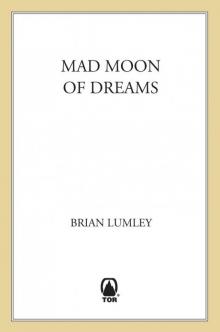 Mad Moon of Dreams
Mad Moon of Dreams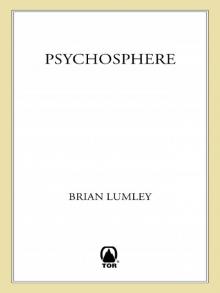 Psychosphere
Psychosphere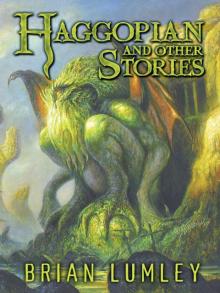 Haggopian and Other Stories
Haggopian and Other Stories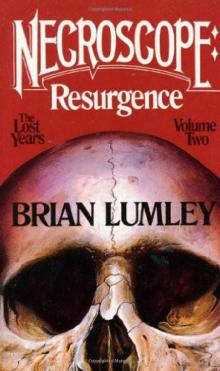 Resurgence_The Lost Years_Volume Two
Resurgence_The Lost Years_Volume Two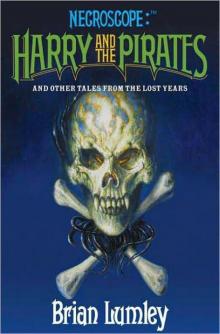 Necroscope: Harry and the Pirates: And Other Tales From the Lost Years
Necroscope: Harry and the Pirates: And Other Tales From the Lost Years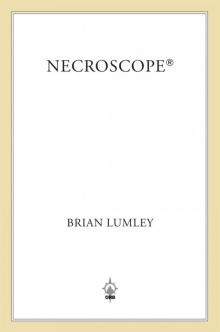 Necroscope®
Necroscope® Dreamlands 5: Questers for Kuranes: Two Tales of Hero and Eldin
Dreamlands 5: Questers for Kuranes: Two Tales of Hero and Eldin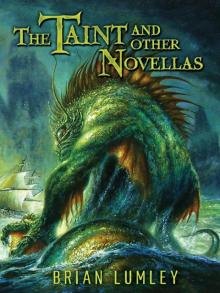 The Taint and Other Novellas: Best Mythos Tales Volume 1
The Taint and Other Novellas: Best Mythos Tales Volume 1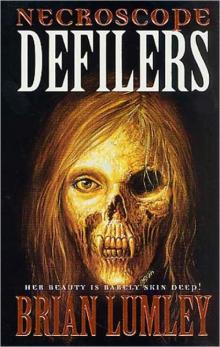 Necroscope: Defilers
Necroscope: Defilers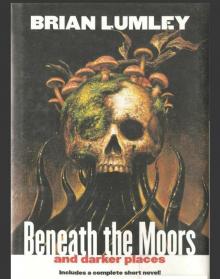 Beneath the Moors and Darker Places
Beneath the Moors and Darker Places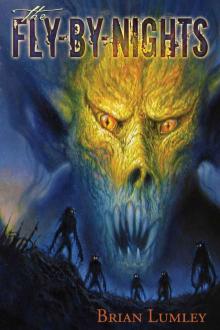 The Fly-By-Nights
The Fly-By-Nights Khai of Khem
Khai of Khem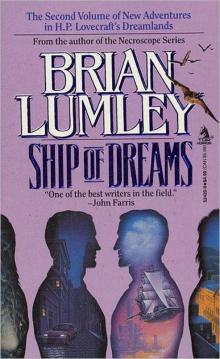 Ship of Dreams
Ship of Dreams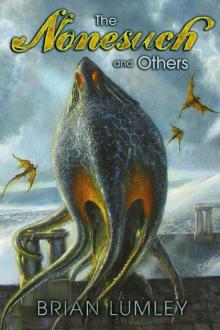 The Nonesuch and Others
The Nonesuch and Others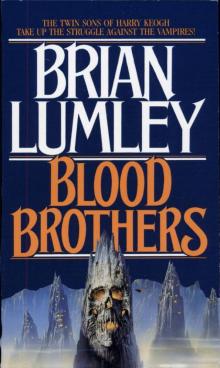 Blood Brothers
Blood Brothers Necroscope
Necroscope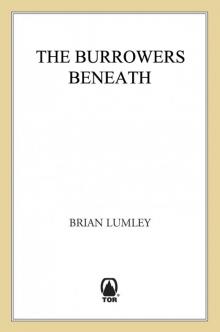 The Burrowers Beneath
The Burrowers Beneath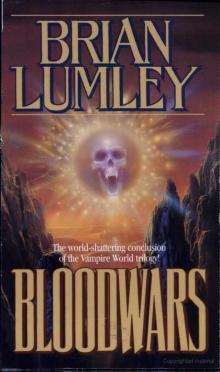 Bloodwars
Bloodwars No Sharks in the Med and Other Stories
No Sharks in the Med and Other Stories The House of Doors - 01
The House of Doors - 01 Screaming Science Fiction
Screaming Science Fiction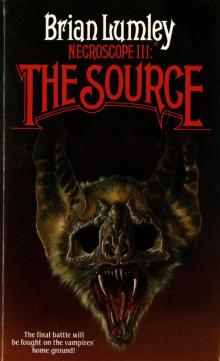 Necroscope III: The Source
Necroscope III: The Source Vampire World I: Blood Brothers
Vampire World I: Blood Brothers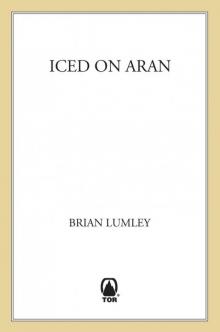 Iced on Aran
Iced on Aran Necroscope: Invaders
Necroscope: Invaders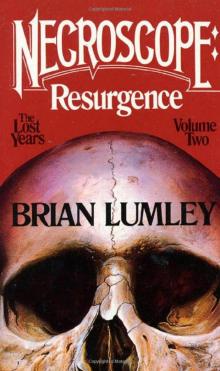 Necroscope: The Lost Years
Necroscope: The Lost Years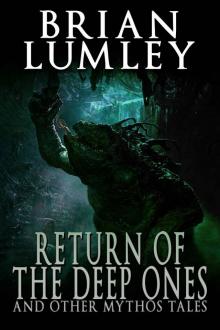 Return of the Deep Ones: And Other Mythos Tales
Return of the Deep Ones: And Other Mythos Tales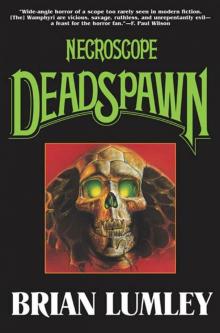 Necroscope V: Deadspawn
Necroscope V: Deadspawn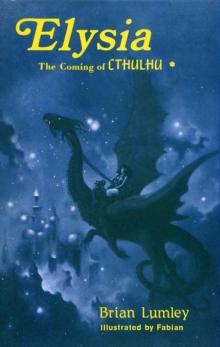 Titus Crow, Volume 3: In the Moons of Borea, Elysia
Titus Crow, Volume 3: In the Moons of Borea, Elysia Hero of Dreams
Hero of Dreams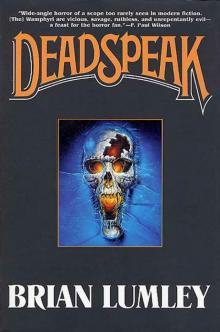 Necroscope IV: Deadspeak
Necroscope IV: Deadspeak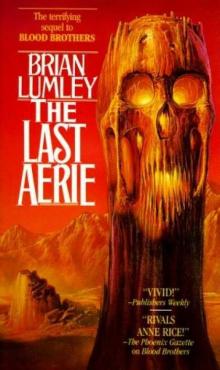 The Last Aerie
The Last Aerie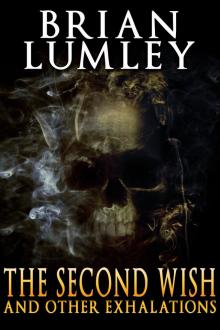 The Second Wish and Other Exhalations
The Second Wish and Other Exhalations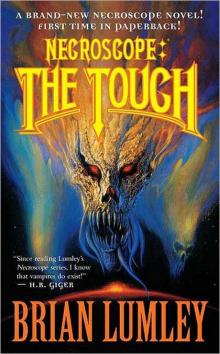 Necroscope: The Touch
Necroscope: The Touch Necroscope: The Plague-Bearer
Necroscope: The Plague-Bearer Necroscope: Avengers
Necroscope: Avengers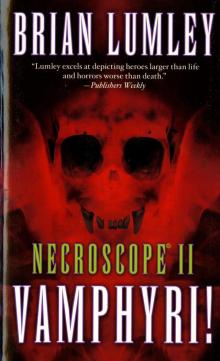 Necroscope II: Wamphyri
Necroscope II: Wamphyri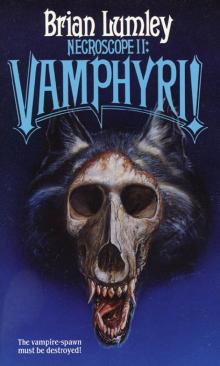 Necroscope II_Vamphyri!
Necroscope II_Vamphyri! A Coven of Vampires
A Coven of Vampires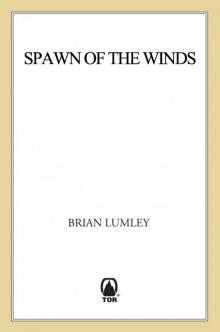 Spawn of the Winds
Spawn of the Winds Sorcery in Shad
Sorcery in Shad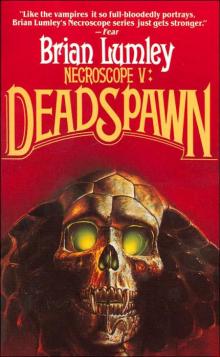 Deadspawn
Deadspawn Necroscope V: Deadspawn n-5
Necroscope V: Deadspawn n-5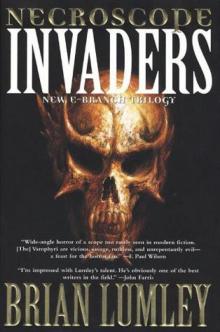 Necroscope: Invaders e-1
Necroscope: Invaders e-1![Beneath the Moors and Darker Places [SSC] Read online](http://i1.bookreadfree.com/i/03/20/beneath_the_moors_and_darker_places_ssc_preview.jpg) Beneath the Moors and Darker Places [SSC]
Beneath the Moors and Darker Places [SSC]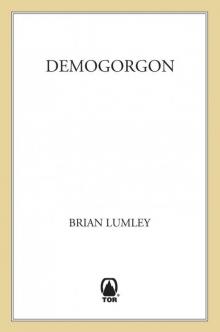 Demogorgon
Demogorgon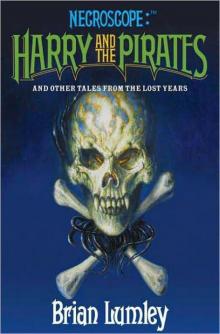 Harry and the Pirates_and Other Tales from the Lost Years
Harry and the Pirates_and Other Tales from the Lost Years Necroscope IV: Deadspeak n-4
Necroscope IV: Deadspeak n-4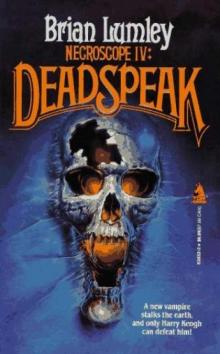 Deadspeak
Deadspeak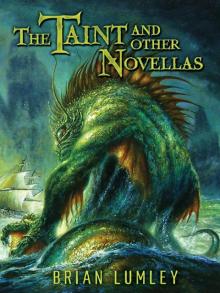 The Taint and Other Novellas
The Taint and Other Novellas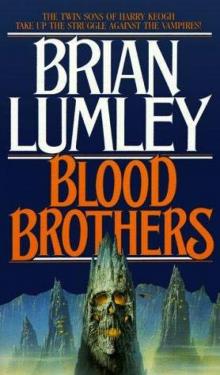 Blood Brothers vw-1
Blood Brothers vw-1 The Source n-3
The Source n-3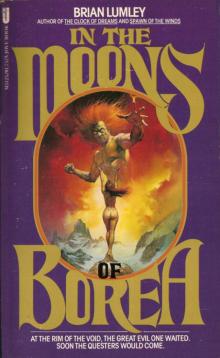 In the Moons of Borea
In the Moons of Borea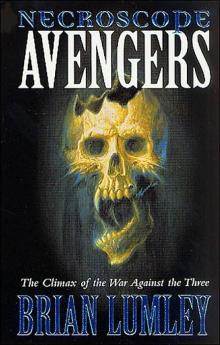 Avengers
Avengers Necroscope n-1
Necroscope n-1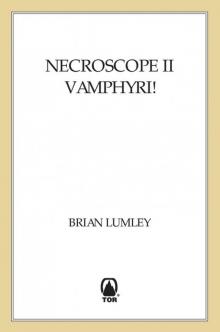 Vamphyri!
Vamphyri!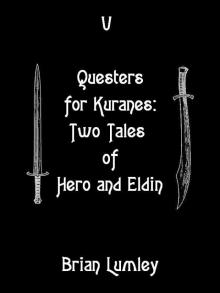 Questers for Kuranes: Two Tales of Hero and Eldin
Questers for Kuranes: Two Tales of Hero and Eldin Necroscope II: Wamphyri! n-2
Necroscope II: Wamphyri! n-2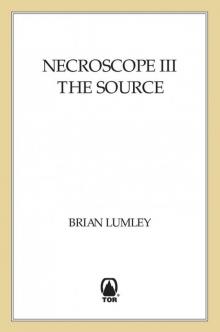 The Source
The Source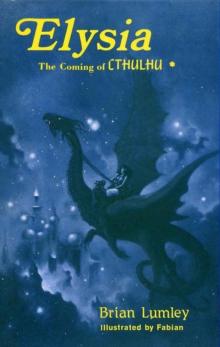 Elysia
Elysia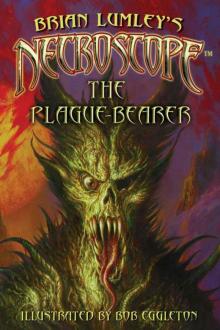 The Plague-Bearer
The Plague-Bearer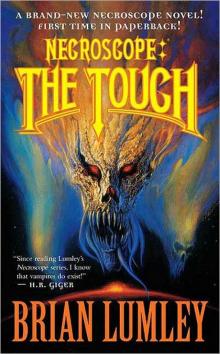 The Touch
The Touch Invaders
Invaders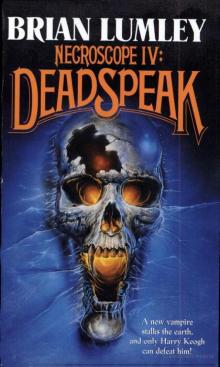 Necroscope 4: Deadspeak
Necroscope 4: Deadspeak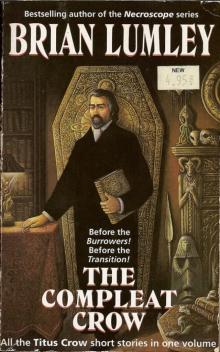 Compleat Crow
Compleat Crow The Mobius Murders
The Mobius Murders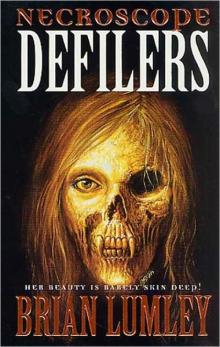 Defilers
Defilers